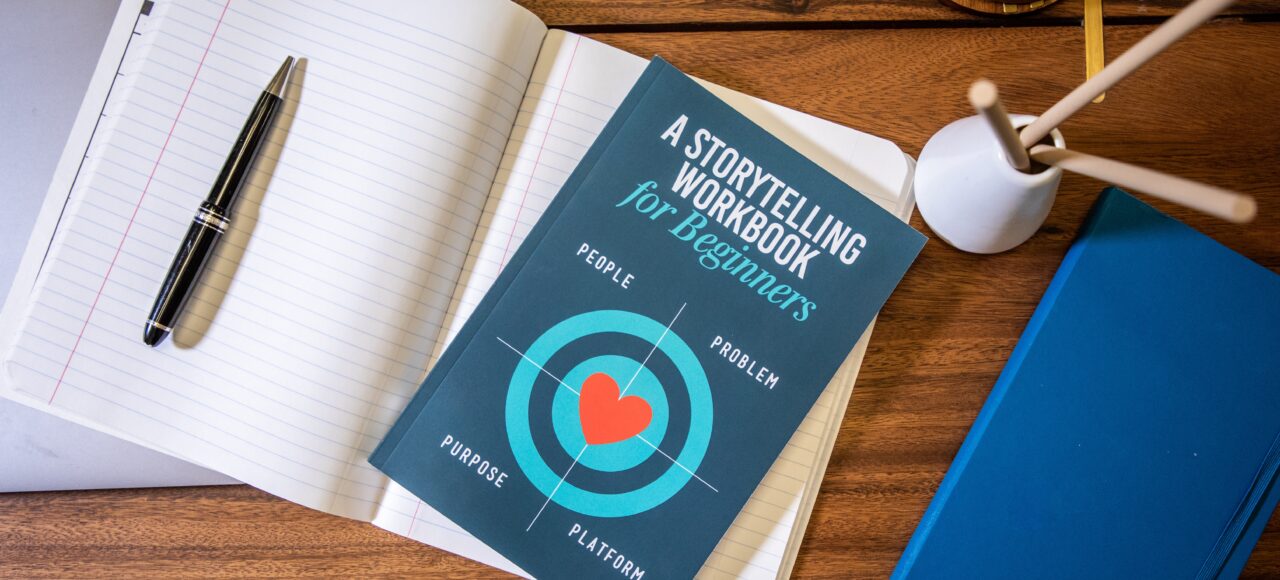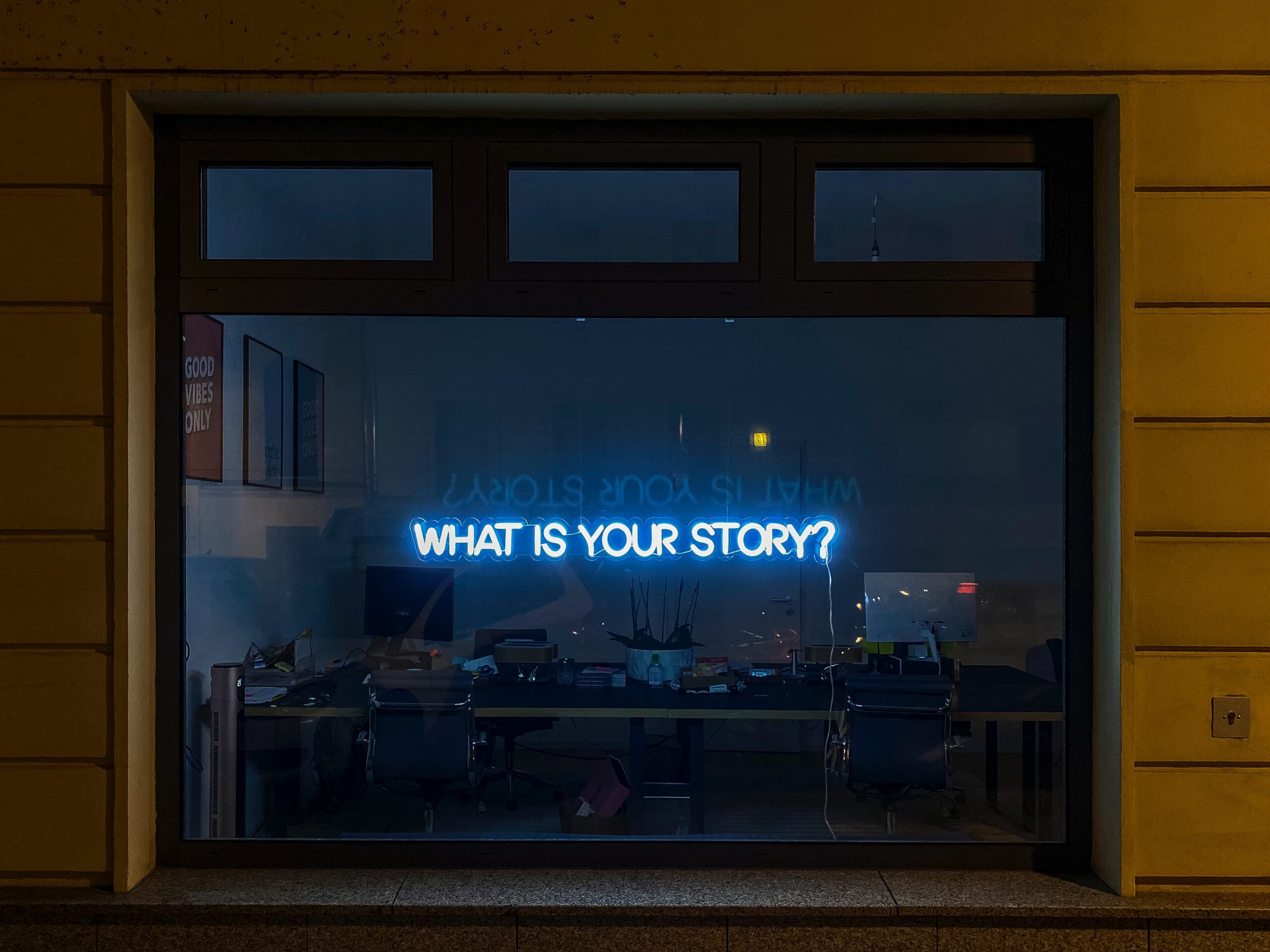
Engaging Funders Through Narrative: Storytelling in Grant Writing
Most prospective grant writers are aware of what makes grant writing more complex than other forms of writing. Grant writing is a multi-step process structured by several rules and guidelines. You must know key historical data, do in-depth research, and prove why your nonprofit deserves a grant more than the other hundreds or thousands that applied. Indeed, crafting just one grant proposal is a time-consuming process with no guaranteed outcome. And as grants are key to the survival and success of non-profits, it’s a vital process. However, fewer prospective grant writers are aware of the creative aspects of writing a grant. Yet, storytelling in grant writing is a major component and deciding factor for success.
Not only do the stories you tell in your proposal engage your funders and give them a reason to keep reading, but they also give them a reason to care about your non-profit and the people you’re trying to help. Your stories highlight the people in your community and why you need to receive the grant. They humanize problems that, in many cases, are global and faceless. And they show exactly how you – and your funders – can help.
Storytelling in grant writing is just as important as your facts and statistics. Remember, everyone who applies for a grant has a reason for needing that money. Your story can set you, your community, and your nonprofit apart from the rest.
How Storytelling in Grant Writing Helps Win Grants
Storytelling helps win grants for a few key reasons. Most simply, powerful stories are more memorable. If you’re looking at 200 proposals, you’re going to remember the one with the most compelling story, not the most well-researched data. Of course, incorrect or bad data will often disqualify you, so that’s not to say you should rely solely on the power of a story.
That being said, a good story may sometimes soften the heart of your funders. If you made a mistake somewhere along the way, but they love what your nonprofit is doing and the story you’ve provided, they may give you a second chance.
Storytelling in grant writing appeals to the emotions of your funders. Indeed, a big part of grant writing is getting your prospective funders invested in the success of your program or project. And people aren’t likely to get invested from numbers alone, especially when that’s all that they look at. At its core, storytelling is a form of communication that helps people connect with each other. It spreads joy, tugs at the heartstrings, and pushes for action.
Keep reading to learn how quality storytelling in grant writing can help you win grants and help your community.

1. The Power of Storytelling
Imagine for a moment that you are the funder of a grant. You’re sifting through dozens and dozens of applications from nonprofits across your state. Each of them has provided statistics and data proving that a problem exists in their community. Maybe they’re trying to help unemployed individuals get quality interview clothes or they want to build an afterschool center that will give kids a safe place to go and eat until their parents get home. The problems are real, the people are real, but you can’t help everyone. What will it be that sets that one nonprofit apart?
In some cases, it comes down to special interests. Some funders will have an issue that is close to their heart. Perhaps they grew up homeless or are a veteran who struggled with mental health after enlistment. These issues will take priority over others.
But often, making the problem “real” to the funders, giving them a face or a person to see and empathize with, changes everything. Storytelling in grant writing does just that.
Standing Out in the Crowd
Imagine amongst the sea of numbers and statistics and surveys, you find the story of Kevin Young, a veteran who has become homeless after returning home after eight years in the military. He has tried getting a job and finding a place, but he has PTSD and is struggling to get back on his feet. When he did get hired, he couldn’t hold jobs down due to his mental health. By providing him with shelter and mental health services, we can give him the tools to turn his situation around. With a little help, he can become self-sufficient and pursue his dreams once more.
Storytelling in grant writing can make all the difference to your funders as it humanizes your nonprofit. Consider, if it came down to faceless statistics from the internet or Kevin Young, who would you choose?

2. Elements of Effective Storytelling
For writers with a technical background rather than a creative one, building a story can be the most difficult part of grant writing. Think of the books, tv shows, and movies you’ve read or seen over the years. Some of them are of higher quality than others.
While you don’t need to develop characters or create an amazing plot twist in your story, you do need to focus on organization, use compelling language, and be clear about your message. Don’t tell us about Kevin Young’s entire history or how he likes to watch a lot of superhero movies. Do tell us about his dream and the obstacles in his path. Tell us about what he’s tried and why it’s failed. Tell us how we can help and why we’ll be effective. Give your readers a reason to care and a call to action.
Part of storytelling in grant writing is showing your funders that they can help. Your call to action turns a sad story into a chance to change lives.
Notably, some people will care more about certain details than others. Some funders will be most interested in the steps Kevin has taken to improve his situation while others will be more interested in his service history. Some will want to know why other resources have failed while others will care more about the next steps. To reach your funders most effectively, you should get to know them.
Getting to Know Funders
Indeed, an important part of storytelling in grant writing is understanding who you’re speaking to and what they’re interested in. We mentioned earlier that some funders have special interests. Part of your research should go into finding those special interests. Appeal to them with your storytelling.
If your prospective funder is invested in mental health, focus on that in your story. If they’re focused on veterans, highlight his service. If you write five grant proposals, you may very well have to write five different versions of the same story.

3. Engaging Funders Through Storytelling
Thus far, we’ve been talking as if your stories must be based on real people’s stories. While it is always vital to know the community you’re trying to help, those narratives don’t support a grant proposal fully. Sometimes, you will want to show what your project or program will accomplish, rather than a person that you will help. Storytelling in grant writing needs to show both sides of an issue.
Indeed, a view into the at-need community always helps to paint a picture of who your funders will be helping, but not how they will help. Part of your storytelling needs to show the real difference your nonprofit will make, even if it hasn’t yet happened.
What to Include in an Effective Story
This part of your story must be supported by facts and research. Show how other nonprofits have succeeded with similar projects. Show the statistics for how many veterans can find and hold onto jobs after using mental health resources.
Storytelling in grant writing must be accurate or else funders will be hesitant to support you. Part of the process already includes research, so you should have statistics readily available.
You’ll weave these facts into the life of a person of your choosing. For every funder, you can create a new person that will appeal to your audience. Tell us their struggles and how they ended up in their position. Give them a goal and dream – something relatable and compelling. But don’t get lost in the details. You’re not writing a novel – just a short blurb.
You should show us how your project or program helps your character get through their struggles. Have Elena, who served with a K-9 in the military and who wants to open an animal rescue, utilize your nonprofit’s mental health services. Show her making progress and give her a realistic ending. She doesn’t open a shelter after her first therapy session. She doesn’t magically find a house and get married and live happily ever after. But maybe she takes the first steps to set up her own nonprofit. The most important thing to show is the impact and outcome of your project or program.

4. Overcoming Common Pitfalls in Storytelling
Of course, there are some common issues that grant writers will run into with their storytelling. Storytelling in grant writing is not like traditional creative writing. As such, there are some unspoken rules about how you should use it. Notably, there is a thin line between providing an emotionally compelling story and emotionally manipulating your audience. You should never imply that your community will suffer directly because another nonprofit was chosen.
Funders don’t need to provide grants. They’re choosing to do so and providing opportunities that otherwise wouldn’t have existed. You’re not trying to guilt them into picking you – you’re creating an argument that shows why your community would benefit.
And most crucially, never lie to create a compelling story. If you’re making up facts or using low-quality sources, your funders will find out. Funders are giving away money with no guarantees that your project will succeed. They will take notice if you’re lying to get their money. Similarly, if you lie about how your program will exist once funded, you may be legally liable.
Technical Aspects
In that regard, you need to find the balance between stories and facts. As we said earlier, there’s no need to write an entire novel in your grant proposal. Your stories highlight important aspects of your grant writing – they aren’t the whole proposal. Don’t be afraid to cut out details that don’t support your overall goal to keep things short and to the point.
Storytelling in grant writing, just like grant writing in general, requires a lot of attention to detail and must follow the rules. Unlike creative writing, you don’t have much freedom in the narratives you write. They must be grounded in reality, based on fact, and an accurate representation of the future.
Additionally, make sure that your story remains consistent in both details and tone, especially if you’re changing your story up for multiple proposals. Sometimes, writers will adopt an inappropriate tone, veering toward pessimism, sarcasm, or uncertainty. While you don’t need to – nor should you – write in an overly formal tone, you don’t want to get too informal either. Basically, your stories and tone should align with your prospective funders’ special interests, missions, and values.
If you’re unsure what language a new funder would prefer, try adopting a semi-formal tone in your stories. In other words, put all of the facts on the page, but don’t be afraid to use some emotional language that highlights the importance of your project.
Lakewood University
Lakewood University offers a 16-week online grant writing certificate program. Students in this class learn how to navigate the world of grant proposals and funders. In addition, they’ll hone their writing skills and discover how to write persuasive, emotional, and informational arguments. Students may also work on their real-world grant throughout the program, getting expert advice through the course. Ultimately, graduates leave with the skills needed to succeed in their careers.
Lakewood University is an accredited online school that offers a variety of degree and certificate programs. We have rolling enrollments and asynchronous courses. In other words, you don’t have to worry about missing a lecture or running late to class. If you plan on enrolling in college while working, Lakewood University offers the flexibility you need to earn your degree.
Don’t hesitate – reach out to our admissions department today to learn more!




